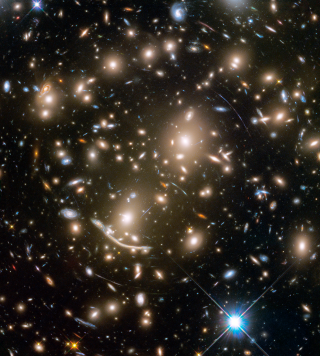Bibcode
Sánchez, S. F.; Kennicutt, R. C.; Gil de Paz, A.; van de Ven, G.; Vílchez, J. M.; Wisotzki, L.; Walcher, C. J.; Mast, D.; Aguerri, J. A. L.; Albiol-Pérez, S.; Alonso-Herrero, A.; Alves, J.; Bakos, J.; Bartáková, T.; Bland-Hawthorn, J.; Boselli, A.; Bomans, D. J.; Castillo-Morales, A.; Cortijo-Ferrero, C.; de Lorenzo-Cáceres, A.; Del Olmo, A.; Dettmar, R.-J.; Díaz, A.; Ellis, S.; Falcón-Barroso, J.; Flores, H.; Gallazzi, A.; García-Lorenzo, B.; González Delgado, R.; Gruel, N.; Haines, T.; Hao, C.; Husemann, B.; Iglésias-Páramo, J.; Jahnke, K.; Johnson, B.; Jungwiert, B.; Kalinova, V.; Kehrig, C.; Kupko, D.; López-Sánchez, Á. R.; Lyubenova, M.; Marino, R. A.; Mármol-Queraltó, E.; Márquez, I.; Masegosa, J.; Meidt, S.; Mendez-Abreu, J.; Monreal-Ibero, A.; Montijo, C.; Mourão, A. M.; Palacios-Navarro, G.; Papaderos, P.; Pasquali, A.; Peletier, R.; Pérez, E.; Pérez, I.; Quirrenbach, A.; Relaño, M.; Rosales-Ortega, F. F.; Roth, M. M.; Ruiz-Lara, T.; Sánchez-Blázquez, P.; Sengupta, C.; Singh, R.; Stanishev, V.; Trager, S. C.; Vazdekis, A.; Viironen, K.; Wild, V.; Zibetti, S.; Ziegler, B.
Bibliographical reference
Astronomy and Astrophysics, Volume 538, id.A8
Advertised on:
2
2012
Journal
Citations
1000
Refereed citations
953
Description
The final product of galaxy evolution through cosmic time is the
population of galaxies in the local universe. These galaxies are also
those that can be studied in most detail, thus providing a stringent
benchmark for our understanding of galaxy evolution. Through the huge
success of spectroscopic single-fiber, statistical surveys of the Local
Universe in the last decade, it has become clear, however, that an
authoritative observational description of galaxies will involve
measuring their spatially resolved properties over their full optical
extent for a statistically significant sample. We present here the Calar
Alto Legacy Integral Field Area (CALIFA) survey, which has been designed
to provide a first step in this direction. We summarize the survey goals
and design, including sample selection and observational strategy. We
also showcase the data taken during the first observing runs (June/July
2010) and outline the reduction pipeline, quality control schemes and
general characteristics of the reduced data. This survey is obtaining
spatially resolved spectroscopic information of a diameter selected
sample of ~600 galaxies in the Local Universe (0.005 < z < 0.03).
CALIFA has been designed to allow the building of two-dimensional maps
of the following quantities: (a) stellar populations: ages and
metallicities; (b) ionized gas: distribution, excitation mechanism and
chemical abundances; and (c) kinematic properties: both from stellar and
ionized gas components. CALIFA uses the PPAK integral field unit (IFU),
with a hexagonal field-of-view of ~1.3⎕', with a 100% covering
factor by adopting a three-pointing dithering scheme. The optical
wavelength range is covered from 3700 to 7000 Å, using two
overlapping setups (V500 and V1200), with different resolutions: R ~ 850
and R ~ 1650, respectively. CALIFA is a legacy survey, intended for the
community. The reduced data will be released, once the quality has been
guaranteed. The analyzed data fulfillthe expectations of the original
observing proposal, on the basis of a set of quality checks and
exploratory analysis: (i) the final datacubes reach a 3σ limiting
surface brightness depth of ~23.0 mag/arcsec2 for the V500
grating data (~22.8 mag/arcsec2 for V1200); (ii) about ~70%
of the covered field-of-view is above this 3σ limit; (iii) the
data have a blue-to-red relative flux calibration within a few percent
in most of the wavelength range; (iv) the absolute flux calibration is
accurate within ~8%with respect to SDSS; (v) the measured spectral
resolution is ~85 km s-1 for V1200 (~150 km s-1
for V500); (vi) the estimated accuracy of the wavelength calibration is
~5 km s-1 for the V1200 data (~10 km s-1 for the
V500 data); (vii) the aperture matched CALIFA and SDSS spectra are
qualitatively and quantitatively similar. Finally, we show that we are
able to carry out all measurements indicated above, recovering the
properties of the stellar populations, the ionized gas andthe kinematics
of both components. The associated maps illustrate the spatial variation
of these parameters across the field, reemphasizing the redshift
dependence of single aperture spectroscopic measurements. We conclude
from this first look at the data that CALIFA will be an important
resource for archaeological studies of galaxies in the Local Universe.
Based on observations collected at the Centro Astronómico Hispano
Alemán (CAHA) at Calar Alto, operated jointly by the
Max-Planck-Institut für Astronomie and the Instituto de
Astrofísica de Andalucía (CSIC).
Related projects

Starbursts in Galaxies GEFE
Starsbursts play a key role in the cosmic evolution of galaxies, and thus in the star formation (SF) history of the universe, the production of metals, and the feedback coupling galaxies with the cosmic web. Extreme SF conditions prevail early on during the formation of the first stars and galaxies, therefore, the starburst phenomenon constitutes a
Casiana
Muñoz Tuñón

Galaxy Evolution in Clusters of Galaxies
Galaxies in the universe can be located in different environments, some of them are isolated or in low density regions and they are usually called field galaxies. The others can be located in galaxy associations, going from loose groups to clusters or even superclusters of galaxies. One of the foremost challenges of the modern Astrophysics is to
Jairo
Méndez Abreu

Traces of Galaxy Formation: Stellar populations, Dynamics and Morphology
We are a large, diverse, and very active research group aiming to provide a comprehensive picture for the formation of galaxies in the Universe. Rooted in detailed stellar population analysis, we are constantly exploring and developing new tools and ideas to understand how galaxies came to be what we now observe.
Anna
Ferré Mateu